In August of 1973 I began attending Prince George’s Community College, while living in Imperial Gardens Apartments in Suitland, MD. After being discharged from the Air Force in February, I had been through an attempt to sell pots and pans and one season of driving a Good Humor truck. Now it was time to start working on an education. After several months of growing my hair and beard, my Hippie Wannabe look was beginning to take form. You may recall in my Good Humor post I mentioned how several of the Ice Cream Men drove a taxi in the off season. I was glad they directed me to this particular occupation. Since I was also attending summer classes, there would be no further Ice Cream Man duties. Hacking was my immediate future until graduation.
Prince George’s Community College, while living in Imperial Gardens Apartments in Suitland, MD. After being discharged from the Air Force in February, I had been through an attempt to sell pots and pans and one season of driving a Good Humor truck. Now it was time to start working on an education. After several months of growing my hair and beard, my Hippie Wannabe look was beginning to take form. You may recall in my Good Humor post I mentioned how several of the Ice Cream Men drove a taxi in the off season. I was glad they directed me to this particular occupation. Since I was also attending summer classes, there would be no further Ice Cream Man duties. Hacking was my immediate future until graduation.
Cab driving proved to be rather lucrative. The Government paid me $388 a month on the G. I. Bill to be a full-time student, and I rented a cab on the weekends from the Bluebird/Yellow/Suburban Cab Company in Marlow Heights, netting between $150 – $200. Working on New Year’s Eve was usually worth an additional $100 – $150 for the night. I was averaging over $1,000 a month, tax free (please don’t tell Uncle Sam), which was a tidy sum back then. It was enough to support my wife and two tots (aged 1 and almost 3), and allowed for the occasional bottle of Boone’s Farm, Bali Hai, Ripple, or a six pack of Black Label. Whenever school was closed for a holiday or snow emergency, I rented a hack and spent the day driving, and studying on the cab stand during slow periods. It was the ultimate temporary profession.
on New Year’s Eve was usually worth an additional $100 – $150 for the night. I was averaging over $1,000 a month, tax free (please don’t tell Uncle Sam), which was a tidy sum back then. It was enough to support my wife and two tots (aged 1 and almost 3), and allowed for the occasional bottle of Boone’s Farm, Bali Hai, Ripple, or a six pack of Black Label. Whenever school was closed for a holiday or snow emergency, I rented a hack and spent the day driving, and studying on the cab stand during slow periods. It was the ultimate temporary profession.
Most of you probably have in your mind the stereotype of the taxi drivers in most cities, who can’t speak English, or feign misunderstanding to drive you out of the way and run up the meter. In 1973, the drivers were primarily American who spoke and understood 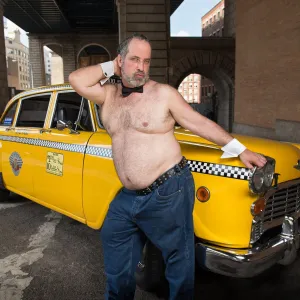 English. But, in defense of today’s cabbies, we weren’t getting constantly mugged and ripped off by passengers, as seems to be so prevalent now. Sure, there was the occasional robbery and the passenger who jumped out without paying, but not to the extent it is today. Those most desperate for work tend to gravitate toward the danger and hassle, because no one else will do it. Cut the drivers a break when criticizing their lack of language skills, if you don’t mind. You’re lucky they are there when you need the ride.
English. But, in defense of today’s cabbies, we weren’t getting constantly mugged and ripped off by passengers, as seems to be so prevalent now. Sure, there was the occasional robbery and the passenger who jumped out without paying, but not to the extent it is today. Those most desperate for work tend to gravitate toward the danger and hassle, because no one else will do it. Cut the drivers a break when criticizing their lack of language skills, if you don’t mind. You’re lucky they are there when you need the ride.
“Who’s on the Marlow, the Marlow?” That’s the call from the dispatcher over the two-way radio putting out a job in the Marlow Heights section. How it worked was the first cab in line sitting on the Marlow Heights stand, located in front of the Giant Food/Steak in a Sack in the Marlow Heights Shopping Center, was given the job. Why the phrase was uttered twice, I’ll never know. Maybe it was to be sure we heard him. If there was no cab on the stand, the dispatcher called “Marlow 1st,” and any driver who was empty in section could bid on the job. The one closest to the fare would get it. “Marlow 2nd” was the next call if no one was empty in section. In this case, the taxi had to be in Marlow, dropping someone off or out of section empty. The closest to the location of the passenger won. Then if it went to “Marlow, Marlow,” which was the final call, and the first driver to bid got the fare.
Marlow Heights stand, located in front of the Giant Food/Steak in a Sack in the Marlow Heights Shopping Center, was given the job. Why the phrase was uttered twice, I’ll never know. Maybe it was to be sure we heard him. If there was no cab on the stand, the dispatcher called “Marlow 1st,” and any driver who was empty in section could bid on the job. The one closest to the fare would get it. “Marlow 2nd” was the next call if no one was empty in section. In this case, the taxi had to be in Marlow, dropping someone off or out of section empty. The closest to the location of the passenger won. Then if it went to “Marlow, Marlow,” which was the final call, and the first driver to bid got the fare.
Recently I met with some folks who grew up in Marlow Heights. The website in the highlighted link is run by Chuck Fraley. He organizes get-togethers of people who were youngsters in the area during the 60s and 70s. I discovered Chuck’s site while doing research for my Blog, 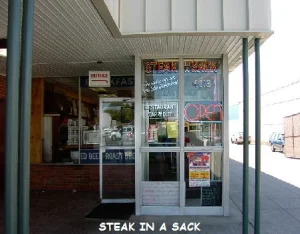 and I’m glad I did. The group met at the Steak in a Sack for a terrific meal that brought back memories of the many sandwiches (basically a steak and cheese in a pita) I ate during my tenure as a cabbie from 1973 – 1976. Chuck was all “retroed-out” in his Ban-Lon shirt, Macs and Chucks with the colored shoelaces. He really works to “Keep the Memories Alive!”
and I’m glad I did. The group met at the Steak in a Sack for a terrific meal that brought back memories of the many sandwiches (basically a steak and cheese in a pita) I ate during my tenure as a cabbie from 1973 – 1976. Chuck was all “retroed-out” in his Ban-Lon shirt, Macs and Chucks with the colored shoelaces. He really works to “Keep the Memories Alive!”
We had several taxi stands in the area. There was the one at the Prince George’s Motel, called “The PG,” which was across the street from Iverson Mall, where I sold shoes at Baker’s in 1967. We had a stand in Suitland at the Scot’s gas station (I forget what it was called). In Temple Hills we were on a dirt lot at the corner of Brinkley and Temple Hills Road, called (now stick with me on this), “The Dirt.” Those clever guys. Then there was the stand outside Andrews Air Force Base at the Ramada Inn called (sing in unison), “The Ramada.” By far the busiest stand was The Marlow. After moving to Greenbelt in 1975, I worked out of the Hyattsville office, and my favorite stand was at the Little Tavern on Route 1, right outside the University of Maryland  campus (I was a Maryland student at this point). The reason I liked that location so much was not just because of the great little burgers, but its name. It was called “The Ritz.” Someone had a sense of humor in naming that one.
campus (I was a Maryland student at this point). The reason I liked that location so much was not just because of the great little burgers, but its name. It was called “The Ritz.” Someone had a sense of humor in naming that one.
Most people these days are moaning and groaning about the price of gasoline; how it’s cutting into their budgets and causing them to forego the extra Starbucks coffee or chocolate bar, just to keep their heads above water. Try having no gas when you are driving for a living. On October 17, 1973, just a couple of months after I started hacking, the Organization of Arab Petroleum Exporting Countries decided to get even with the Western world for their support of Israel. Their plan to use oil as a weapon, by making it difficult to obtain, was secretly negotiated in August, in preparation of Egypt and Syria’s united assault of Israel. Both countries launched their attack on October 6th (Yom Kippur), and it was the beginning of the fourth Arab Israeli war.
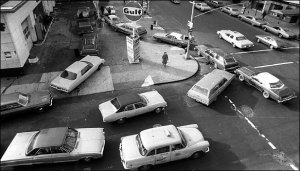 Fine and dandy for them, but my family had to eat and the Oil Embargo was not a welcome addition to my lifestyle. Sitting in line waiting for gas, and running out of gas while waiting, was not a particular thrill. It was irritating. In one instance, I was lucky enough to get a big fare going to Glen
Fine and dandy for them, but my family had to eat and the Oil Embargo was not a welcome addition to my lifestyle. Sitting in line waiting for gas, and running out of gas while waiting, was not a particular thrill. It was irritating. In one instance, I was lucky enough to get a big fare going to Glen  Burnie. The good news was I got a lot of cash for the trip. The bad news was I ended up hitchhiking, holding an empty Clorox container (it was in the trunk in case of an emergency), to get to a station and wait in line, so I could fill up the jug and get back to my taxi, with just enough gas to find another line that I could join and eventually fill up the car. Hitching a ride with long hair and a beard (two more months of growth), wearing jeans, Chucks, and my old Air Force fatigue jacket, isn’t a particularly appealing look to passersby. The addition of the Clorox bottle to my ensemble gave some people the impression I was a bum. My Hippie Wannabe look was transformed into Hobo Chique. It was a killer look, and I don’t mean in the sense of hot and sexy, I mean killer in the sense of homicidal. Fortunately, a real Hippie stopped in his VW bus and drove me around to get the bottle filled and back to my cab. Kindred Spirits. “Peace, Brother. Groovy.”
Burnie. The good news was I got a lot of cash for the trip. The bad news was I ended up hitchhiking, holding an empty Clorox container (it was in the trunk in case of an emergency), to get to a station and wait in line, so I could fill up the jug and get back to my taxi, with just enough gas to find another line that I could join and eventually fill up the car. Hitching a ride with long hair and a beard (two more months of growth), wearing jeans, Chucks, and my old Air Force fatigue jacket, isn’t a particularly appealing look to passersby. The addition of the Clorox bottle to my ensemble gave some people the impression I was a bum. My Hippie Wannabe look was transformed into Hobo Chique. It was a killer look, and I don’t mean in the sense of hot and sexy, I mean killer in the sense of homicidal. Fortunately, a real Hippie stopped in his VW bus and drove me around to get the bottle filled and back to my cab. Kindred Spirits. “Peace, Brother. Groovy.”
One result of the Oil Embargo was the proliferation of self-service islands at gas stations. Although the first self-service station was opened in 1947 by George Urich, they didn’t really catch on. In fact, many states banned them due to concerns about the elimination of jobs, and distrust of the inexperienced motorist spraying the ground (and possibly other customers) with petrol or driving away and ripping a hose off the pump.  After the crisis that occurred in ’73, and the subsequent spike in gas prices that resulted, stations began offering the choice of full-service at one price and self-service at a lower cost. Still, many states didn’t allow self-service stations, but as we all know, today they are prevalent everywhere except New Jersey and Oregon. Additionally, the many incarnations of forced increased mileage legislation grew out of the Embargo.
After the crisis that occurred in ’73, and the subsequent spike in gas prices that resulted, stations began offering the choice of full-service at one price and self-service at a lower cost. Still, many states didn’t allow self-service stations, but as we all know, today they are prevalent everywhere except New Jersey and Oregon. Additionally, the many incarnations of forced increased mileage legislation grew out of the Embargo.
Aside from the gas crisis, I enjoyed driving a cab, usually working the night shift because there were fewer drivers to compete with, and fewer old ladies with eight bags of groceries to be lugged to their sixth-floor apartment, who only took the cab a few blocks, which meant a low fare, small tip, a lot of time spent, and losing my place in line at the stand. If I did work during the day, I avoided The Marlow, opting to drive around on the edge of several sections at once so I could “stretch my  hood” when a job came out. If there was no cab on the stand of a particular section and it went to 1st call, I would make up a location in that section, hoping no other cab could see me. Any time a driver got caught fibbing he was cut off the air for an hour. If I was lucky enough there was no other cab closer to the job, I would get it, which meant I had to hurry, so as not to be discovered. A long delay in picking up a passenger, when I was supposedly nearby, was a dead giveaway. But we could always use the excuse we had a bathroom emergency on the way.
hood” when a job came out. If there was no cab on the stand of a particular section and it went to 1st call, I would make up a location in that section, hoping no other cab could see me. Any time a driver got caught fibbing he was cut off the air for an hour. If I was lucky enough there was no other cab closer to the job, I would get it, which meant I had to hurry, so as not to be discovered. A long delay in picking up a passenger, when I was supposedly nearby, was a dead giveaway. But we could always use the excuse we had a bathroom emergency on the way.
Marlow Heights is fairly close to Andrews Air Force Base. Andrews is where Air Force One, the plane used by the President, is housed. There was always a “Press” plane as part of the entourage whenever the President went on trips. Although there were several reporters  privileged enough to accompany the President on Air Force One, most of them flew on the Press plane. And, many of them ordered taxi service to get them into Washington and Northern Virginia once their plane landed. Our dispatcher would give us notification that several cabs would be needed in the Andrews section, so those who wanted the fares would go and sit on The Ramada at the appropriate time in anticipation of a pretty decent trip. The passengers were usually interesting, talkative (after drinking on the plane) and tipped well. I had the pleasure of carrying Connie Chung, Pierre Salinger and Garry Trudeau on separate occasions.
privileged enough to accompany the President on Air Force One, most of them flew on the Press plane. And, many of them ordered taxi service to get them into Washington and Northern Virginia once their plane landed. Our dispatcher would give us notification that several cabs would be needed in the Andrews section, so those who wanted the fares would go and sit on The Ramada at the appropriate time in anticipation of a pretty decent trip. The passengers were usually interesting, talkative (after drinking on the plane) and tipped well. I had the pleasure of carrying Connie Chung, Pierre Salinger and Garry Trudeau on separate occasions.
But the best part of driving a hack was practicing my “Chicken Call.” 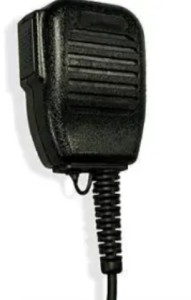 There was a driver whose last name was Abel. I forget his first name because they always just called him Abel. He was a full-time cabbie who worked during the morning hours to make enough money to go to the racetrack in the afternoon and bet on the horses. There were several guys who drove to bet. Then after the races were over, if they lost, they’d come back out on the street and work several hours, or if they won, they would take the rest of the day off. Abel was kind of a cut-up and the dispatchers liked him. My task was to cackle like a chicken over the radio, and I am very good. What was so much fun about the “Chicken Call” was the dispatcher always blamed Abel. My original intention was just to cluck for fun, but when they started yelling at Abel, it became a pretty good game. Sometimes I would continue on until the dispatcher was irritated to the point of threatening to cut Abel off the air. And Abel wasn’t even working. We had different dispatchers at different times, and they always blamed Abel. I got a real chuckle out of it, and it beat studying while sitting on a stand.
There was a driver whose last name was Abel. I forget his first name because they always just called him Abel. He was a full-time cabbie who worked during the morning hours to make enough money to go to the racetrack in the afternoon and bet on the horses. There were several guys who drove to bet. Then after the races were over, if they lost, they’d come back out on the street and work several hours, or if they won, they would take the rest of the day off. Abel was kind of a cut-up and the dispatchers liked him. My task was to cackle like a chicken over the radio, and I am very good. What was so much fun about the “Chicken Call” was the dispatcher always blamed Abel. My original intention was just to cluck for fun, but when they started yelling at Abel, it became a pretty good game. Sometimes I would continue on until the dispatcher was irritated to the point of threatening to cut Abel off the air. And Abel wasn’t even working. We had different dispatchers at different times, and they always blamed Abel. I got a real chuckle out of it, and it beat studying while sitting on a stand.
I often think about what it would be like to drive a cab today, but I’m sure it would not be as entertaining as then. Uber has put an end to  most taxis. I’m not even sure Abel is still alive, but if I were ever to cross his path again, I’d confess to the “Chicken Call,” just to see his expression.
most taxis. I’m not even sure Abel is still alive, but if I were ever to cross his path again, I’d confess to the “Chicken Call,” just to see his expression.
“Who’s on the Coop, the Coop?”
With Love,
Bake My Fish
 I’ve been a member of a Facebook Group called You May Be From Capitol Heights, Suitland and Hillside? for quite some time. I haven’t been active until recently and since the group includes quite a few people I knew during my childhood (I went by Robby back then), many ask me what I have been doing in the 55 years since I moved from Capitol Heights. Since it is really difficult to respond in Facebook chat I thought it would be easier to just add my bio from Classmates. If you click on any of the links below, you’ll be entertained by further details. So, here goes . . .
I’ve been a member of a Facebook Group called You May Be From Capitol Heights, Suitland and Hillside? for quite some time. I haven’t been active until recently and since the group includes quite a few people I knew during my childhood (I went by Robby back then), many ask me what I have been doing in the 55 years since I moved from Capitol Heights. Since it is really difficult to respond in Facebook chat I thought it would be easier to just add my bio from Classmates. If you click on any of the links below, you’ll be entertained by further details. So, here goes . . . 


 After several years of not maintaining this blog, I am back. Twitter took me away, but Twitter is not the same site now as it was then, so I need another outlet.
After several years of not maintaining this blog, I am back. Twitter took me away, but Twitter is not the same site now as it was then, so I need another outlet. It was 1967. I was 17 at the time and a big fan of the emerging fast-food craze. McDonald’s was taking off, and we had a place named Sidley’s
It was 1967. I was 17 at the time and a big fan of the emerging fast-food craze. McDonald’s was taking off, and we had a place named Sidley’s  Burger Shack on Marlboro Pike, near the Hillside Drive-in Theater, selling yummy hamburgers for fifteen cents a pop. I loved Fridays because my mother often brought home Sidley’s dinner, which included hamburgers, fries, and shakes. So, I thought the best way to get a constant supply of burgers was to go to work for the new place called Red Barn that had recently opened in
Burger Shack on Marlboro Pike, near the Hillside Drive-in Theater, selling yummy hamburgers for fifteen cents a pop. I loved Fridays because my mother often brought home Sidley’s dinner, which included hamburgers, fries, and shakes. So, I thought the best way to get a constant supply of burgers was to go to work for the new place called Red Barn that had recently opened in 







 on New Year’s Eve was usually worth an additional $100 – $150 for the night. I was averaging over $1,000 a month, tax free (please don’t tell Uncle Sam), which was a tidy sum back then. It was enough to support my wife and two tots (aged 1 and almost 3), and allowed for the occasional bottle of Boone’s Farm, Bali Hai, Ripple, or a six pack of Black Label. Whenever school was closed for a holiday or snow emergency, I rented a hack and spent the day driving, and studying on the cab stand during slow periods. It was the ultimate temporary profession.
on New Year’s Eve was usually worth an additional $100 – $150 for the night. I was averaging over $1,000 a month, tax free (please don’t tell Uncle Sam), which was a tidy sum back then. It was enough to support my wife and two tots (aged 1 and almost 3), and allowed for the occasional bottle of Boone’s Farm, Bali Hai, Ripple, or a six pack of Black Label. Whenever school was closed for a holiday or snow emergency, I rented a hack and spent the day driving, and studying on the cab stand during slow periods. It was the ultimate temporary profession. English. But, in defense of today’s cabbies, we weren’t getting constantly mugged and ripped off by passengers, as seems to be so prevalent now. Sure, there was the occasional robbery and the passenger who jumped out without paying, but not to the extent it is today. Those most desperate for work tend to gravitate toward the danger and hassle, because no one else will do it. Cut the drivers a break when criticizing their lack of language skills, if you don’t mind. You’re lucky they are there when you need the ride.
English. But, in defense of today’s cabbies, we weren’t getting constantly mugged and ripped off by passengers, as seems to be so prevalent now. Sure, there was the occasional robbery and the passenger who jumped out without paying, but not to the extent it is today. Those most desperate for work tend to gravitate toward the danger and hassle, because no one else will do it. Cut the drivers a break when criticizing their lack of language skills, if you don’t mind. You’re lucky they are there when you need the ride. Marlow Heights stand, located in front of the Giant Food/
Marlow Heights stand, located in front of the Giant Food/ and I’m glad I did. The group met at the Steak in a Sack for a terrific meal that brought back memories of the many sandwiches (basically a steak and cheese in a pita) I ate during my tenure as a cabbie from 1973 – 1976. Chuck was all “retroed-out” in his
and I’m glad I did. The group met at the Steak in a Sack for a terrific meal that brought back memories of the many sandwiches (basically a steak and cheese in a pita) I ate during my tenure as a cabbie from 1973 – 1976. Chuck was all “retroed-out” in his  campus (I was a Maryland student at this point). The reason I liked that location so much was not just because of the great little burgers, but its name. It was called “The Ritz.” Someone had a sense of humor in naming that one.
campus (I was a Maryland student at this point). The reason I liked that location so much was not just because of the great little burgers, but its name. It was called “The Ritz.” Someone had a sense of humor in naming that one. Fine and dandy for them, but my family had to eat and the Oil Embargo was not a welcome addition to my lifestyle. Sitting in line waiting for gas, and running out of gas while waiting, was not a particular thrill. It was irritating. In one instance, I was lucky enough to get a big fare going to Glen
Fine and dandy for them, but my family had to eat and the Oil Embargo was not a welcome addition to my lifestyle. Sitting in line waiting for gas, and running out of gas while waiting, was not a particular thrill. It was irritating. In one instance, I was lucky enough to get a big fare going to Glen  Burnie. The good news was I got a lot of cash for the trip. The bad news was I ended up hitchhiking, holding an empty Clorox container (it was in the trunk in case of an emergency), to get to a station and wait in line, so I could fill up the jug and get back to my taxi, with just enough gas to find another line that I could join and eventually fill up the car. Hitching a ride with long hair and a beard (two more months of growth), wearing jeans, Chucks, and my old Air Force fatigue jacket, isn’t a particularly appealing look to passersby. The addition of the Clorox bottle to my ensemble gave some people the impression I was a bum. My Hippie Wannabe look was transformed into Hobo Chique. It was a killer look, and I don’t mean in the sense of hot and sexy, I mean killer in the sense of homicidal. Fortunately, a real Hippie stopped in his VW bus and drove me around to get the bottle filled and back to my cab. Kindred Spirits. “Peace, Brother. Groovy.”
Burnie. The good news was I got a lot of cash for the trip. The bad news was I ended up hitchhiking, holding an empty Clorox container (it was in the trunk in case of an emergency), to get to a station and wait in line, so I could fill up the jug and get back to my taxi, with just enough gas to find another line that I could join and eventually fill up the car. Hitching a ride with long hair and a beard (two more months of growth), wearing jeans, Chucks, and my old Air Force fatigue jacket, isn’t a particularly appealing look to passersby. The addition of the Clorox bottle to my ensemble gave some people the impression I was a bum. My Hippie Wannabe look was transformed into Hobo Chique. It was a killer look, and I don’t mean in the sense of hot and sexy, I mean killer in the sense of homicidal. Fortunately, a real Hippie stopped in his VW bus and drove me around to get the bottle filled and back to my cab. Kindred Spirits. “Peace, Brother. Groovy.” After the crisis that occurred in ’73, and the subsequent spike in gas prices that resulted, stations began offering the choice of full-service at one price and self-service at a lower cost. Still, many states didn’t allow self-service stations, but as we all know, today they are prevalent everywhere except
After the crisis that occurred in ’73, and the subsequent spike in gas prices that resulted, stations began offering the choice of full-service at one price and self-service at a lower cost. Still, many states didn’t allow self-service stations, but as we all know, today they are prevalent everywhere except  hood” when a job came out. If there was no cab on the stand of a particular section and it went to 1st call, I would make up a location in that section, hoping no other cab could see me. Any time a driver got caught fibbing he was cut off the air for an hour. If I was lucky enough there was no other cab closer to the job, I would get it, which meant I had to hurry, so as not to be discovered. A long delay in picking up a passenger, when I was supposedly nearby, was a dead giveaway. But we could always use the excuse we had a bathroom emergency on the way.
hood” when a job came out. If there was no cab on the stand of a particular section and it went to 1st call, I would make up a location in that section, hoping no other cab could see me. Any time a driver got caught fibbing he was cut off the air for an hour. If I was lucky enough there was no other cab closer to the job, I would get it, which meant I had to hurry, so as not to be discovered. A long delay in picking up a passenger, when I was supposedly nearby, was a dead giveaway. But we could always use the excuse we had a bathroom emergency on the way. privileged enough to accompany the President on Air Force One, most of them flew on the Press plane. And, many of them ordered taxi service to get them into Washington and Northern Virginia once their plane landed. Our dispatcher would give us notification that several cabs would be needed in the Andrews section, so those who wanted the fares would go and sit on The Ramada at the appropriate time in anticipation of a pretty decent trip. The passengers were usually interesting, talkative (after drinking on the plane) and tipped well. I had the pleasure of carrying
privileged enough to accompany the President on Air Force One, most of them flew on the Press plane. And, many of them ordered taxi service to get them into Washington and Northern Virginia once their plane landed. Our dispatcher would give us notification that several cabs would be needed in the Andrews section, so those who wanted the fares would go and sit on The Ramada at the appropriate time in anticipation of a pretty decent trip. The passengers were usually interesting, talkative (after drinking on the plane) and tipped well. I had the pleasure of carrying  There was a driver whose last name was Abel. I forget his first name because they always just called him Abel. He was a full-time cabbie who worked during the morning hours to make enough money to go to the racetrack in the afternoon and bet on the horses. There were several guys who drove to bet. Then after the races were over, if they lost, they’d come back out on the street and work several hours, or if they won, they would take the rest of the day off. Abel was kind of a cut-up and the dispatchers liked him. My task was to cackle like a chicken over the radio, and I am very good. What was so much fun about the “Chicken Call” was the dispatcher always blamed Abel. My original intention was just to cluck for fun, but when they started yelling at Abel, it became a pretty good game. Sometimes I would continue on until the dispatcher was irritated to the point of threatening to cut Abel off the air. And Abel wasn’t even working. We had different dispatchers at different times, and they always blamed Abel. I got a real chuckle out of it, and it beat studying while sitting on a stand.
There was a driver whose last name was Abel. I forget his first name because they always just called him Abel. He was a full-time cabbie who worked during the morning hours to make enough money to go to the racetrack in the afternoon and bet on the horses. There were several guys who drove to bet. Then after the races were over, if they lost, they’d come back out on the street and work several hours, or if they won, they would take the rest of the day off. Abel was kind of a cut-up and the dispatchers liked him. My task was to cackle like a chicken over the radio, and I am very good. What was so much fun about the “Chicken Call” was the dispatcher always blamed Abel. My original intention was just to cluck for fun, but when they started yelling at Abel, it became a pretty good game. Sometimes I would continue on until the dispatcher was irritated to the point of threatening to cut Abel off the air. And Abel wasn’t even working. We had different dispatchers at different times, and they always blamed Abel. I got a real chuckle out of it, and it beat studying while sitting on a stand. most taxis. I’m not even sure Abel is still alive, but if I were ever to cross his path again, I’d confess to the “Chicken Call,” just to see his expression.
most taxis. I’m not even sure Abel is still alive, but if I were ever to cross his path again, I’d confess to the “Chicken Call,” just to see his expression. In 1968 I was a skinny, pimple-faced High School Senior. My biggest challenges were refraining from squeezing my zits and soiling my undies in my sleep. Worrying about economics, paying bills, who was in charge of the world, or any of those things took a back seat to fantasizing about my Business teacher, Miss Hopkins, and her Tabu perfume, and selling shoes at Bakers in Iverson Mall. But the whole country was going crazy; I just didn’t think about it.
In 1968 I was a skinny, pimple-faced High School Senior. My biggest challenges were refraining from squeezing my zits and soiling my undies in my sleep. Worrying about economics, paying bills, who was in charge of the world, or any of those things took a back seat to fantasizing about my Business teacher, Miss Hopkins, and her Tabu perfume, and selling shoes at Bakers in Iverson Mall. But the whole country was going crazy; I just didn’t think about it. John Kennedy and then won the election by beating a lame opponent, Barry Goldwater. But now he wanted out. The country was being torn apart by opposition to a war that was none of our business. Martin Luther King and Robert Kennedy were assassinated. After the death of MLK, the cities erupted in riots. Whole city
John Kennedy and then won the election by beating a lame opponent, Barry Goldwater. But now he wanted out. The country was being torn apart by opposition to a war that was none of our business. Martin Luther King and Robert Kennedy were assassinated. After the death of MLK, the cities erupted in riots. Whole city  blocks were
blocks were  O. J. Simpson won the Heisman Trophy.
O. J. Simpson won the Heisman Trophy. television reports, while my parents worried I would be drafted. I worried, too. Everyone was expected to wave a flag and declare love for America, but the young people could not figure out why we were in Southeast Asia. We were being thrown to the dogs for the sake of stopping Communist aggression. Or, so the story went. No one wanted to call it a Civil War.
television reports, while my parents worried I would be drafted. I worried, too. Everyone was expected to wave a flag and declare love for America, but the young people could not figure out why we were in Southeast Asia. We were being thrown to the dogs for the sake of stopping Communist aggression. Or, so the story went. No one wanted to call it a Civil War. my tongue, because I understood. No one really wanted to go.
my tongue, because I understood. No one really wanted to go.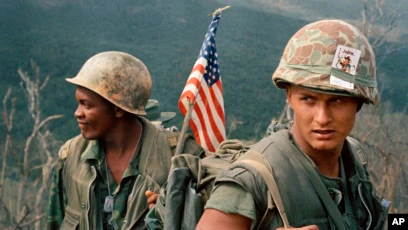 them. They’re safe. You can label me Liberal or whatever, but the fact of the matter is, war kills. It isn’t good for anyone. Everyone suffers.
them. They’re safe. You can label me Liberal or whatever, but the fact of the matter is, war kills. It isn’t good for anyone. Everyone suffers. Charles Manson is well known for his cult following of marauding murderers and sadistic killers. He had a way of convincing some folks to snuff out lives indiscriminately, without conscience. Fortunately, he died on November 19, 2017, so for some sickos, their martyr is gone.
Charles Manson is well known for his cult following of marauding murderers and sadistic killers. He had a way of convincing some folks to snuff out lives indiscriminately, without conscience. Fortunately, he died on November 19, 2017, so for some sickos, their martyr is gone. resurrection from the dead of the executed savior, Jesus Christ? I don’t quite understand the correlation of the two, but I assume when the
resurrection from the dead of the executed savior, Jesus Christ? I don’t quite understand the correlation of the two, but I assume when the  even though those doing the killing and torturing declared they were doing so “in his name.” Was Peter (the rabbit) created as a sort of soothing distraction? Who could blame a cute little bunny, giving away treats, for any indiscretions of the past? I’m sure anyone being tortured during the Spanish Inquisition did not have furry little critters dancing in their heads. They were just a little busy croaking.
even though those doing the killing and torturing declared they were doing so “in his name.” Was Peter (the rabbit) created as a sort of soothing distraction? Who could blame a cute little bunny, giving away treats, for any indiscretions of the past? I’m sure anyone being tortured during the Spanish Inquisition did not have furry little critters dancing in their heads. They were just a little busy croaking.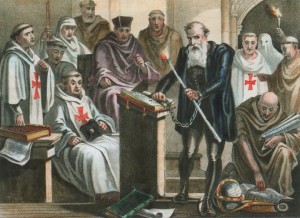 historians the most notorious of them all; quite a blemish on the permanent record of influential distributors of The Word. There is not much mention of it during contemporary sermons. It’s better to forget and let bygones be bygones. After all, those who were involved are no longer available for interviews, and descendants can’t change whatever an ancestor considered appropriate.
historians the most notorious of them all; quite a blemish on the permanent record of influential distributors of The Word. There is not much mention of it during contemporary sermons. It’s better to forget and let bygones be bygones. After all, those who were involved are no longer available for interviews, and descendants can’t change whatever an ancestor considered appropriate.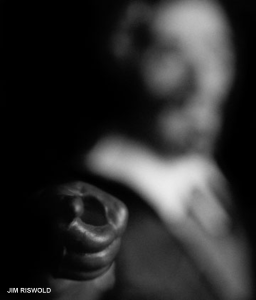 campaign to rid the land of non-believers and establish the Catholic Church as the one true religion.
campaign to rid the land of non-believers and establish the Catholic Church as the one true religion.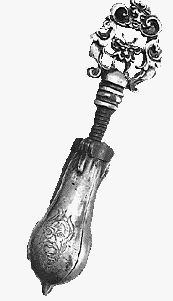 Apparently, the fun part for the Inquisitors was the torture. They developed
Apparently, the fun part for the Inquisitors was the torture. They developed  Heights that always died within a week, and pancake breakfast at the First Baptist Church on 57th Avenue. Then there was fidgeting through the preacher’s talk about Christ and why we celebrate Easter, but all that went over my head because I couldn’t wait to get home to find the hidden eggs. I bet more children overdosed on hard-boiled eggs during that time of year than any other. The eventual
Heights that always died within a week, and pancake breakfast at the First Baptist Church on 57th Avenue. Then there was fidgeting through the preacher’s talk about Christ and why we celebrate Easter, but all that went over my head because I couldn’t wait to get home to find the hidden eggs. I bet more children overdosed on hard-boiled eggs during that time of year than any other. The eventual  flatulence was cause for celebration as each kid tried to out-toot the other. It was a grand time, followed by several days out of school. So, what about Jesus? Lost in the childish celebration of
flatulence was cause for celebration as each kid tried to out-toot the other. It was a grand time, followed by several days out of school. So, what about Jesus? Lost in the childish celebration of 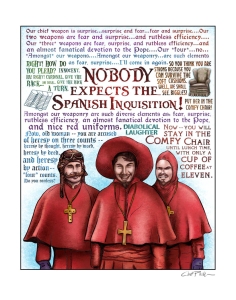 declare all the holidays we want to make it seem better, but it can’t erase the past. Charles Manson should never be forgiven. His victims can’t speak out for themselves. Neither can those who suffered during the Inquisition.
declare all the holidays we want to make it seem better, but it can’t erase the past. Charles Manson should never be forgiven. His victims can’t speak out for themselves. Neither can those who suffered during the Inquisition. That’s what I think when starting every TV event because I’m being blasted with all the gibberishy nonsense regarding what I’m about to watch that may possibly in the eyes of someone somewhere upset me in some trivial or possibly major way if I am sitting improperly clothed in a go-cart by the light of the moon in a corn field recently used as a launching pad for the Jeepers Creepers beast. I mean, c’mon, isn’t the
That’s what I think when starting every TV event because I’m being blasted with all the gibberishy nonsense regarding what I’m about to watch that may possibly in the eyes of someone somewhere upset me in some trivial or possibly major way if I am sitting improperly clothed in a go-cart by the light of the moon in a corn field recently used as a launching pad for the Jeepers Creepers beast. I mean, c’mon, isn’t the  two, so I’ll chance it. R means there will be lots of cussing, violence and sexual innuendos. I’m all in. If it’s NC-17 (which I don’t recall ever seeing) it’ll probably be a terrible movie pretending to be porn. So, why does the media feel the necessity to add more
two, so I’ll chance it. R means there will be lots of cussing, violence and sexual innuendos. I’m all in. If it’s NC-17 (which I don’t recall ever seeing) it’ll probably be a terrible movie pretending to be porn. So, why does the media feel the necessity to add more 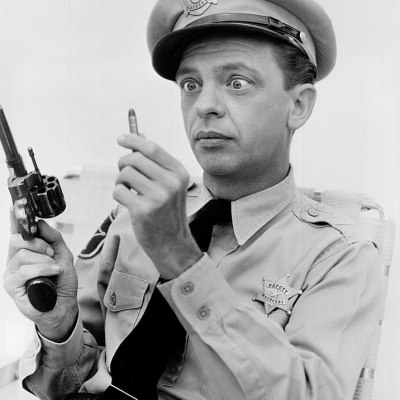 Fife pulling out his bullet-less gun, Elly May acting too sexy, Coyote trying to kill Roadrunner, Dick Van Dyke almost kissing Mary Tyler Moore before he trips over the ottoman, Popeye punching out Bluto, Curly whoop whooping his way through unintentionally humiliating someone while Moe slaps him silly, or some secretary in some show lighting up a cigarette. Do you get my drift? Today all those things can be considered hurtful if even thought about, so be warned.
Fife pulling out his bullet-less gun, Elly May acting too sexy, Coyote trying to kill Roadrunner, Dick Van Dyke almost kissing Mary Tyler Moore before he trips over the ottoman, Popeye punching out Bluto, Curly whoop whooping his way through unintentionally humiliating someone while Moe slaps him silly, or some secretary in some show lighting up a cigarette. Do you get my drift? Today all those things can be considered hurtful if even thought about, so be warned. I get it. Society changes and so do moral norms. Movies and television shows during the 60s were wholesome and free from meddling by those who would school us regarding what we should watch. We only had three stations, so how much damage to our psyche could there be?
I get it. Society changes and so do moral norms. Movies and television shows during the 60s were wholesome and free from meddling by those who would school us regarding what we should watch. We only had three stations, so how much damage to our psyche could there be? I didn’t necessarily hold my hand over my mouth in shock and putter away from the screen, but I did notice.
I didn’t necessarily hold my hand over my mouth in shock and putter away from the screen, but I did notice. images, jumpscares, fighting over a parking space, spurting blood, drinking of cheap fortified wine, dog taking a dump, spider walking up a girl’s arm, smoking, racism, classism, discomfort caused by a character inserting a pair of contact lenses which could be uncomfortable for people who are sensitive to seeing someone touching their eyes, Knock Knock and Yo’ Mama jokes, panty hose laid over a chair, skid marks on underwear, back view of some guy peeing on a bush, ice cream cone dropped on the ground, vomiting, eating bugs, etc.”
images, jumpscares, fighting over a parking space, spurting blood, drinking of cheap fortified wine, dog taking a dump, spider walking up a girl’s arm, smoking, racism, classism, discomfort caused by a character inserting a pair of contact lenses which could be uncomfortable for people who are sensitive to seeing someone touching their eyes, Knock Knock and Yo’ Mama jokes, panty hose laid over a chair, skid marks on underwear, back view of some guy peeing on a bush, ice cream cone dropped on the ground, vomiting, eating bugs, etc.”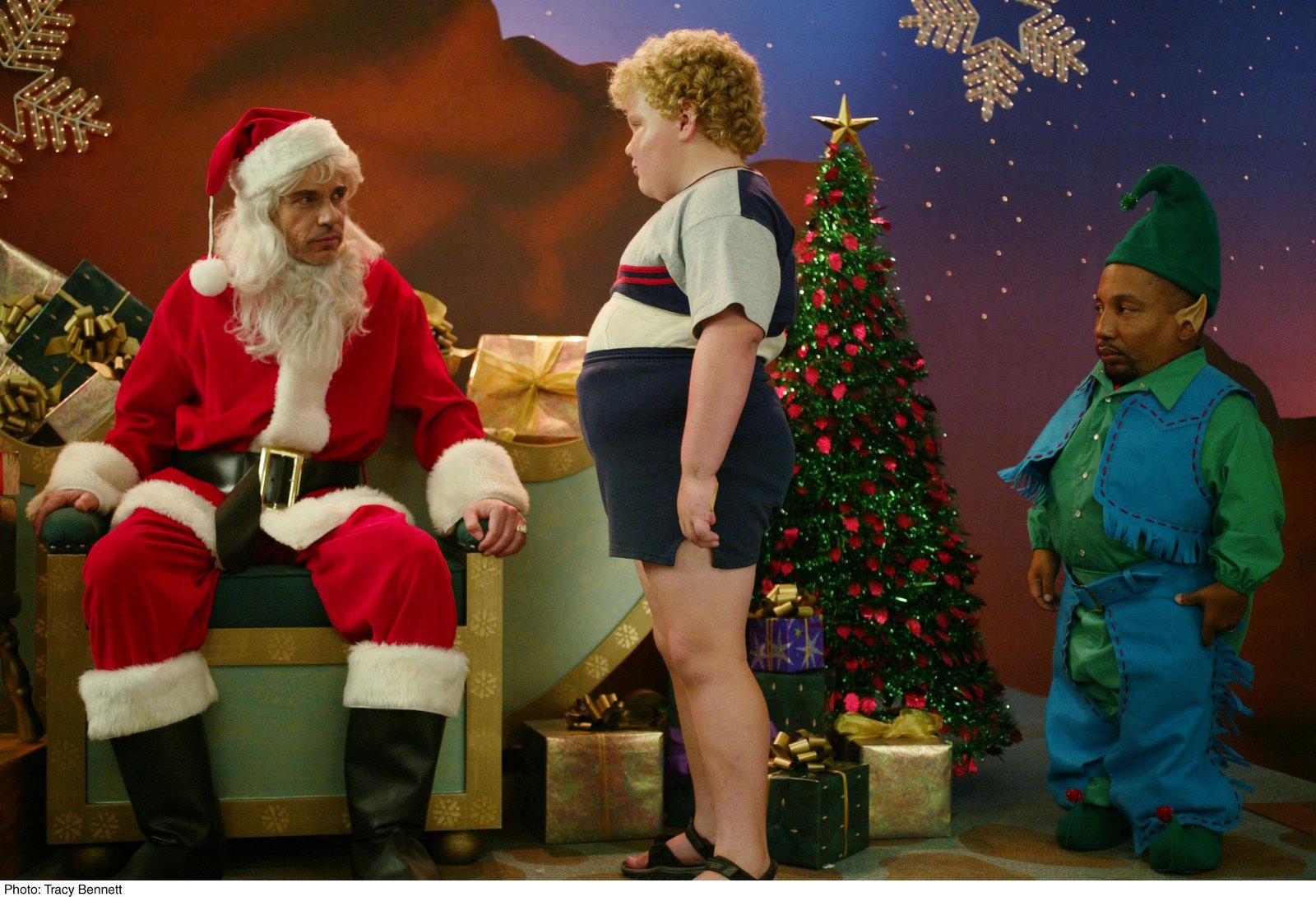 This Christmas I watched
This Christmas I watched 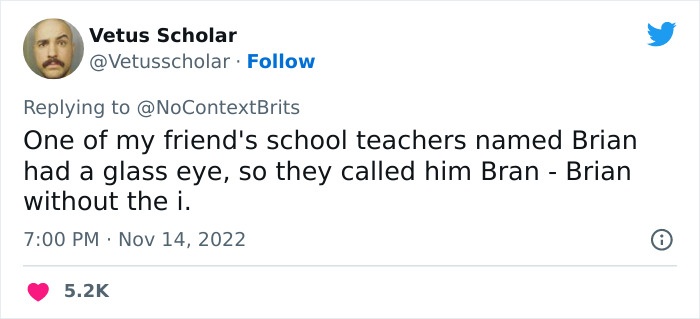 . If it’s Reform
. If it’s Reform 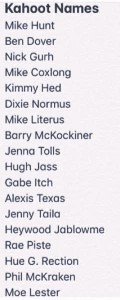

 Pssst! What’s wrong with this picture? Give up? Well? What? It’s the fraction. I didn’t pay much attention when I was younger, nor have any idea when it began. If you know, tell me, because I am clueless. Now that I’m old and cranky, it just pisses me off!
Pssst! What’s wrong with this picture? Give up? Well? What? It’s the fraction. I didn’t pay much attention when I was younger, nor have any idea when it began. If you know, tell me, because I am clueless. Now that I’m old and cranky, it just pisses me off! purposely pumped 9/10 of a gallon in my car. I usually try to round it off at the .00 mark, occasionally going a penny over (man, it ticks me off when that happens) and then try to go all the way to the next .00. Sometimes I get caught at .77 and can’t fill the tank any more without spilling it on my shoes. My preference is to pay for the fuel in round numbers, not tenths. I rarely have a pocket full of tenthathents.
purposely pumped 9/10 of a gallon in my car. I usually try to round it off at the .00 mark, occasionally going a penny over (man, it ticks me off when that happens) and then try to go all the way to the next .00. Sometimes I get caught at .77 and can’t fill the tank any more without spilling it on my shoes. My preference is to pay for the fuel in round numbers, not tenths. I rarely have a pocket full of tenthathents.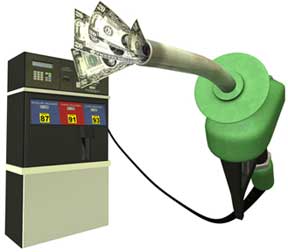 3.23, not 3.24. Many will drive a couple of more miles to buy the gasoline at 3.22 9/10, because it seems like it’s only 3.22. The strategy seems to work. I too, fall prey to their ploy. And to be even sneakier, they don’t use dollar signs (like they’re some fancy restaurant), as if we lemmings won’t know it’s money. Lately, I seem to have stopped chasing down the few-cents-cheaper-gallon-several-blocks-away. It just doesn’t seem worth the fight. I’ll probably burn any savings during the chase down. When gasoline is necessary, I just get it.
3.23, not 3.24. Many will drive a couple of more miles to buy the gasoline at 3.22 9/10, because it seems like it’s only 3.22. The strategy seems to work. I too, fall prey to their ploy. And to be even sneakier, they don’t use dollar signs (like they’re some fancy restaurant), as if we lemmings won’t know it’s money. Lately, I seem to have stopped chasing down the few-cents-cheaper-gallon-several-blocks-away. It just doesn’t seem worth the fight. I’ll probably burn any savings during the chase down. When gasoline is necessary, I just get it.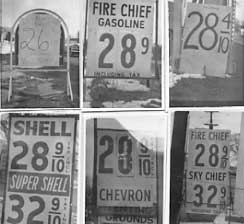 almost as irritating, but for some reason not quite as much as 9/10. Decimals are more appealing than fractions. Fractions seem a bit unwieldy. Decimals are quick and clean. Fractions are like a little fence you have to jump. Decimals are to the point. Hell, they are the point.
almost as irritating, but for some reason not quite as much as 9/10. Decimals are more appealing than fractions. Fractions seem a bit unwieldy. Decimals are quick and clean. Fractions are like a little fence you have to jump. Decimals are to the point. Hell, they are the point.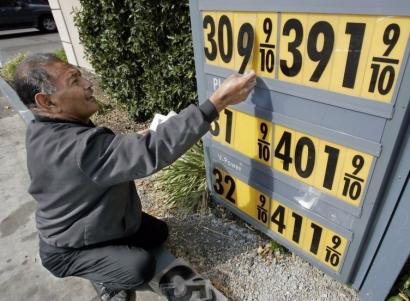 arrived where people are paying more for water than gasoline. Of course, no one can drink 10 gallons of water a day, but we can easily use 10 gallons of gas.
arrived where people are paying more for water than gasoline. Of course, no one can drink 10 gallons of water a day, but we can easily use 10 gallons of gas.
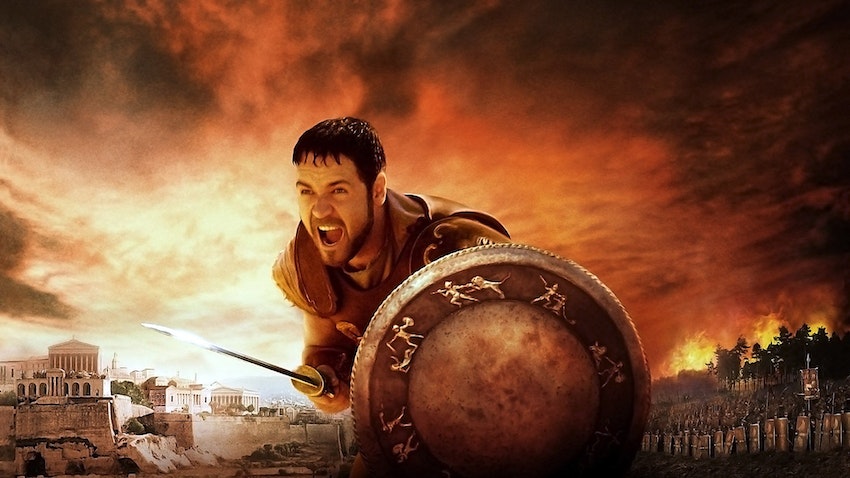 I love the
I love the  lateral that is music to our ears. Living beyond 65 for an offensive lineman is a luxury, but who cares? We have our sport. Today’s Gladiators provide our entertainment and milk our weaknesses by proxy.
lateral that is music to our ears. Living beyond 65 for an offensive lineman is a luxury, but who cares? We have our sport. Today’s Gladiators provide our entertainment and milk our weaknesses by proxy. are waiting for the fiery crash. In hockey we love the fight, where a couple of teeth are knocked out. A knockout in boxing brings with it a cheer from the fans, and tears from the loser’s family. Baseball brawls, with the dugouts emptying on the field are particularly exciting; the more players involved, the more newsworthy the event. An NBA player entering the stands to punch a fan in the mouth gives us goose bumps. Soccer hooligans are damned-near idols in some countries, tearing down fences and trampling spectators. A near-death collision in the NFL is spectacular. We thrive on the violence. Am I wrong?
are waiting for the fiery crash. In hockey we love the fight, where a couple of teeth are knocked out. A knockout in boxing brings with it a cheer from the fans, and tears from the loser’s family. Baseball brawls, with the dugouts emptying on the field are particularly exciting; the more players involved, the more newsworthy the event. An NBA player entering the stands to punch a fan in the mouth gives us goose bumps. Soccer hooligans are damned-near idols in some countries, tearing down fences and trampling spectators. A near-death collision in the NFL is spectacular. We thrive on the violence. Am I wrong? Every year the NFL winner comes down to which team is the healthiest. When key players are hurt, the whole complexion of a team changes. How many of you relish the thought of your team’s biggest rival losing a player who makes a difference? I’m happy when Dak Prescott is hurt, or Ezekiel Elliott doesn’t get to do his cereal mime because he’s out with an injury. It helps the
Every year the NFL winner comes down to which team is the healthiest. When key players are hurt, the whole complexion of a team changes. How many of you relish the thought of your team’s biggest rival losing a player who makes a difference? I’m happy when Dak Prescott is hurt, or Ezekiel Elliott doesn’t get to do his cereal mime because he’s out with an injury. It helps the  only have a few months before I’ll have to apologize to my wife and dogs for ignoring them. Sunday is my domain.
only have a few months before I’ll have to apologize to my wife and dogs for ignoring them. Sunday is my domain. It is generally accepted that
It is generally accepted that  manager and
manager and  team and Saturdays were anxiously anticipated. I couldn’t wait to get to the lanes for the bowling (but really for the French fries). Bowling Alley fries were the best. That was when they cooked them in real fat, not this sissy trans-fat-less stuff we use today. Grease, salt and ketchup . . . . mmmmm, the best. We were active kids, not slothy adults, so the cholesterol didn’t clog our arteries. In my adult years I bowled with a fellow who drenched his French fries in mustard. If we wanted to snatch a fry or two while he was on the lane bowling, we had to eat them with the yellow stuff. I guess his intent was to thwart our thievery of his snack. It worked. Or maybe he just liked them with mustard. On our team, he was the only one.
team and Saturdays were anxiously anticipated. I couldn’t wait to get to the lanes for the bowling (but really for the French fries). Bowling Alley fries were the best. That was when they cooked them in real fat, not this sissy trans-fat-less stuff we use today. Grease, salt and ketchup . . . . mmmmm, the best. We were active kids, not slothy adults, so the cholesterol didn’t clog our arteries. In my adult years I bowled with a fellow who drenched his French fries in mustard. If we wanted to snatch a fry or two while he was on the lane bowling, we had to eat them with the yellow stuff. I guess his intent was to thwart our thievery of his snack. It worked. Or maybe he just liked them with mustard. On our team, he was the only one. bowled on leagues in Suitland, Forestville (Parkland), Queenstown, Hyattsville (Prince George’s Plaza), Marlow Heights, Catonsville (Westview), Laurel (with mustard guy), Silver Spring (White Oak), Riverdale (Rinaldi), Wheaton (Glenmont), College Park, and probably a couple of places I’ve forgotten.
bowled on leagues in Suitland, Forestville (Parkland), Queenstown, Hyattsville (Prince George’s Plaza), Marlow Heights, Catonsville (Westview), Laurel (with mustard guy), Silver Spring (White Oak), Riverdale (Rinaldi), Wheaton (Glenmont), College Park, and probably a couple of places I’ve forgotten. occurrence. Many ten pin bowlers think they’re “tough guys” because they can roll the heavy ball down the lanes. They ain’t so tough when ending up with two pins for a whole frame because the first ball chopped, and the next two were rolled through the hole. I guess they really don’t appreciate the challenge and precision necessary to be a good duck pinner, so they make fun of it.
occurrence. Many ten pin bowlers think they’re “tough guys” because they can roll the heavy ball down the lanes. They ain’t so tough when ending up with two pins for a whole frame because the first ball chopped, and the next two were rolled through the hole. I guess they really don’t appreciate the challenge and precision necessary to be a good duck pinner, so they make fun of it. The biggest factor in the decline was the demise in 1973 of the only company manufacturing automatic pinsetters (one source says it was 1969).
The biggest factor in the decline was the demise in 1973 of the only company manufacturing automatic pinsetters (one source says it was 1969). due to their willingness to expand and Sherman’s desire to stay at home. His company didn’t survive, and today Fair Lanes establishments are named AMF.
due to their willingness to expand and Sherman’s desire to stay at home. His company didn’t survive, and today Fair Lanes establishments are named AMF. That’s all fine and dandy, but my preferred awards were for Best Team Name and Best Bowling Attire. My favorite team name and attire (designed by my son) is in the picture to the left.
That’s all fine and dandy, but my preferred awards were for Best Team Name and Best Bowling Attire. My favorite team name and attire (designed by my son) is in the picture to the left. like a star. Spend a few minutes clicking on the links (particularly the
like a star. Spend a few minutes clicking on the links (particularly the  Only a few of you might recognize the guy in the picture. His name was
Only a few of you might recognize the guy in the picture. His name was 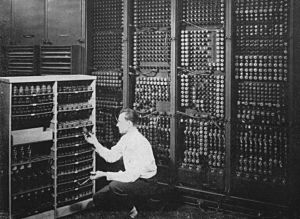 card reader console with several
card reader console with several  used different sing-song inflections and would go on and on into the whole rendition you might observe at a tobacco auction (where as a boy, he developed his fascination). The students loved it. We were all cracking up. Richard really was good.
used different sing-song inflections and would go on and on into the whole rendition you might observe at a tobacco auction (where as a boy, he developed his fascination). The students loved it. We were all cracking up. Richard really was good. There was more to Richard Rose than the hard-working Computer Guy/Auctioneer. When I ran for the
There was more to Richard Rose than the hard-working Computer Guy/Auctioneer. When I ran for the 
 American Heart Association of Carroll County. If you have an auction, who do you call? Richard Rose! He jumped at the opportunity.
American Heart Association of Carroll County. If you have an auction, who do you call? Richard Rose! He jumped at the opportunity.